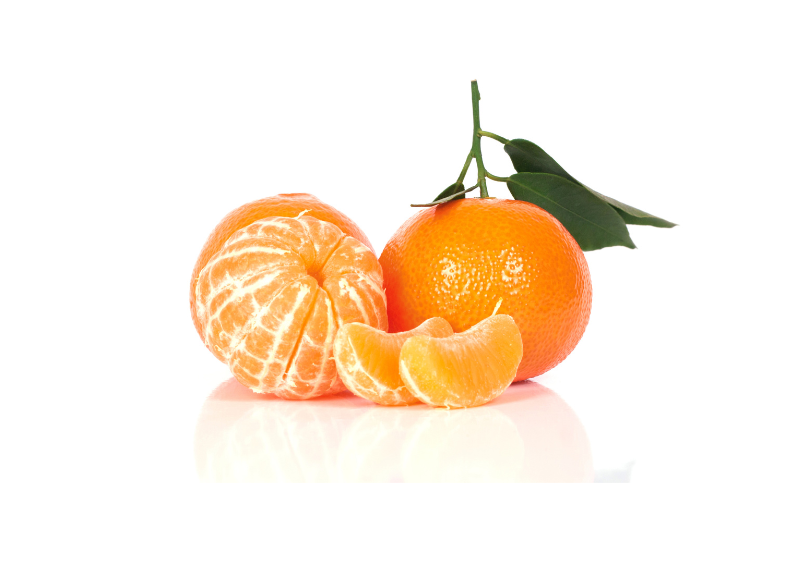What is an Afourer Mandarin?
Afourer mandarin is a late season variety which is harvested after the satsuma and is available in New Zealand stores in late winter, from mid August through to mid October.
This popular mandarin has a distinctive vibrant orange skin, which is easy to peel. It has a deliciously refreshing juicy flesh with a rich and sweet flavour. Afourer mandarins contain only a small number of seeds making them a very popular choice in salads (and lunch boxes throughout the country!).
Afourer mandarin is a widely grown commercial variety of mandarin known as 'citrus reticulata afourer'. They are commonly grown in Australia, in regions with an extremely warm summer with full sun. In recent years, Afourer Mandarin citrus trees have been grown under trial here in New Zealand's Northland, where early evidence indicates that the plant is going to be a fruitful success.

Other popular types of mandarin
Afourer mandarins are very popular in New Zealand but they aren’t the only citrus on offer.
Satsuma

The satsuma is a kiwi-favourite with its mild sweetness with low acidity. It has very loose skin making it easy to peel (and remove the pith). This, and that they are mostly seedless, makes them a favourite for snacking (particularly for kids).
The satsuma is usually first on the shelves between April and July.
Clementine

The clementine is another mostly-seedless variety that is also easy to peel. It is more tangy than Afourer and Satsuma varieties with a brighter skin.
The mandarin clementine is grown in New Zealand but is often also imported. It is available mid-season between May and August.
Encore

Like the Afourer, the Encore mandarin is a late season fruit available on shelves between October and March. It is a medium-to-large fruit, very juicy, with a rich, sweet flavour. Like other varieties they are considered largely seedless (a few more seeds than other varieties) and easy to peel.
Imperial
 The Imperial mandarin is a favourite over the ditch in Australia. But they are also grown in New Zealand. They are an early variety that ripen at the start of the mandarin season usually available on shelves April through July.
The Imperial mandarin is a favourite over the ditch in Australia. But they are also grown in New Zealand. They are an early variety that ripen at the start of the mandarin season usually available on shelves April through July.
Imperial mandarins are medium sized with a yellow-orange skin, sweet and juicy with few-to-no seeds.
Tangelo (Mandarin Hybrid)
 Tangelo mandarins are a hybrid of grapefruit and pomelo which gives them their sweet-tart flavour. They are larger than most other mandarins, at about the size of a fist, and you won’t miss the distinctive ‘bump’.
Tangelo mandarins are a hybrid of grapefruit and pomelo which gives them their sweet-tart flavour. They are larger than most other mandarins, at about the size of a fist, and you won’t miss the distinctive ‘bump’.
Tangelo mandarins are available on the shelves from September to December.

How to buy and store mandarins
When buying any type of mandarin, including afourer mandarins, look for ripe fruit which is firm but slightly soft to the touch, with a deep, vibrant orange skin. Select fruit that feels heavy in the hand, indicating juicy flesh. If the mandarin feels ‘deflated’ it has already lost a lot of its juice. Avoid these fruits and any with blemishes, dents or cracks in the skin.
Remember, mandarins, like all citrus, do not get any sweeter or more ripe once they have been picked.
Can you keep mandarins in the fridge?
Yes, you can keep mandarins in the fridge. (In fact, it’s best if you do.) When you get home, wrap them in and store them inside the refrigerator for up to a week. It’s best to keep mandarins whole and unpeeled. While you could leave them out at room temperature for around a week, they fare better in the fridge where they are less likely to dry out.
How to eat Afourer Mandarins
- Eat in the hand Always peel fruit before eating. Fortunately these seedless mandarins are really easy to peel making them perfect for children's school lunch boxes, snacks and picnics where they can be eaten in the hand or individual segments. Find kid friendly lunchbox recipes here.
- Juice to drink or add to sauces, gravy and marinades.
- Candy the skin and add to yoghourt, desserts and ice cream
- Zest the skin and add to biscuits, slices and cakes you are baking.
- Separate the flesh into segments and toss through crunchy salads for extra sweetness and texture.
Want to know your mandarins from your oranges?
Mandarins are a type of orange but we tend to think of them as a different fruit as they are, well, different.
The main differences between mandarins and oranges:
-
Mandarins are smaller and flatter (less spherical) than oranges.
-
Mandarins tend to have thinner, looser skin than oranges making them easier to peel and remove the pith. This generally makes them a more popular snacking option.
-
Mandarins are typically sweeter than oranges which tend to be tangier and more acidic (although some orange varieties are particularly sweet such as Navel oranges).
-
Most mandarins are seedless (or close to) whereas some oranges have seeds and some don’t.
-
Oranges tend to be better for juicing than mandarins.
Health benefits
-
There are just 37 calories in one small mandarin, so these are a perfect sweet, guilt free treat.
-
Afourer are a great source of Vitamin C which is a powerful antioxidant that's anti viral and has a valuable role to perform in wound healing, iron absorption, preventing cancer and neuro degenerative diseases.
-
Good source of dietary fibre
-
They're cholesterol free and a rich source of dietary fibre which helps to prevent cholesterol absorption in the gut and improve digestion.
